About a year ago, I was called upon by a tea vendor to write about tisanes made from holly species. Various caffeinated infusions have been made from holly plants—guayusa, yaupon, and the granddaddy of ‘em all, yerba mate. But in my research, I ran across a beverage made from a holly plant . . . in China.
The species of holly? Ilex kudingcha (sometimes referred to as Ilex kashue). The beverage? Kuding Cha. The name translated roughly to “bitter nail tea”. As the name implies, it had a very bitter taste if over-brewed. And, like its Western cousins, it was also (quite possibly) caffeinated.
After learning of that interesting bit of information, I didn’t pay it any mind. I knew no one who carried it. But then I saw a striking picture by one of my vendor acquaintances on Instagram—Nomad Tea Merchant. They carried Kuding Cha.
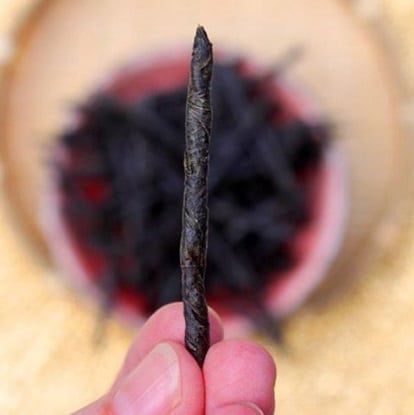
Image owned by Nomad Tea Merchants.
Naturally, I grilled them geekily for more information. Was it caffeinated? How bitter was it? I heard there were health benefits; will it make my prostate glow in the dark? (Okay, maybe not that last one.)
Nomad’s Felicia Stewart took these queries all in stride, and answered them to the best of her ability. The matter was pretty much settled. I had to try this for myself. My appetite for the weird was further whetted when they posted this.
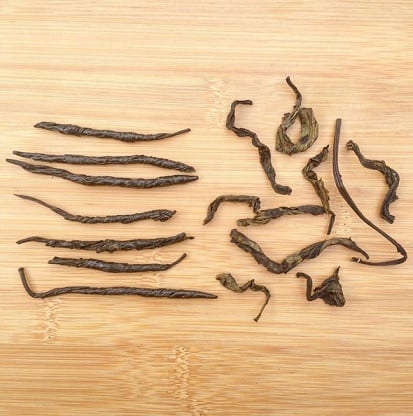
Image owned by Nomad Tea Merchants.
Apparently, the stuff they carried was from Yunnan province, China. The twistier ones on the right hailed from Sichuan province. A comparison piece was percolating in my brain.
Before I could even type up a beggar’s missive to Nomad Tea Merchant, I received an email from Felicia. They wanted my feedback on it. I don’t think I could’ve said yes fast enough. To prep myself, I looked up their bio on the strange li’l herb.
*Sigh*
Okay, everyone knows how I feel about the word “detox”, right? Do I need to go on any further about my extreme dislike for that word, or it’s bandying about in tea circles? I talked with Nomad about this, and they mentioned that it was referred thusly because of the Chinese medicinal claim toward liver health. Just keep in mind, though, I was in this for the herb’s story, not the purported “health benefits”. I couldn’t give two shits about that. All settled? Good. Moving on.
A few weeks later, the herbals arrived.
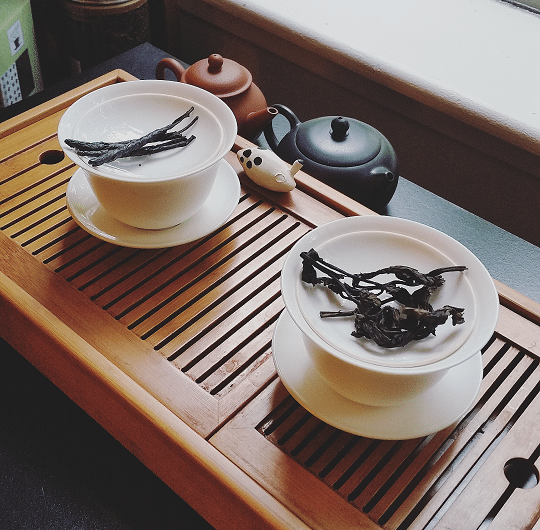
For brewing, Nomad Tea Merchant recommended two different ways. One was a gongfu approach, while the other—and the one I opted for due to ease—was to brew ‘em for one minute in boiled water. Leaf requirement for both? One spindle. That was it. Easy.

I was quite surprised when I beheld the spindled, Yunnan version of these Kuding leaves. They were long and dark-colored. What color exactly? I dunno . . . just dark. But what was most alarming was the aroma they gave off. I expected something similar to tree bark—as was the case with other holly species turned “tea”—but the impression I got from these was vastly different. I was more reminded of a sheng puerh or cinnamon bark, or a sheng puerh that was aged in cinnamon bark.
The liquor brewed to a pale but shiny (!!!) green with an aroma of . . . water. Honestly, there really wasn’t much of a smell to speak of. If I was reachin’, I could say there was a bit of bitter mintiness in there, but it was incredibly subtle. The flavor, though, was a different story. And it was here where the sheng puerh comparisons came back again. On the initial sip, I detected an herbaceous character, but that transitioned to a sage-y something . . . before giving way to this weird, weird aftertaste.
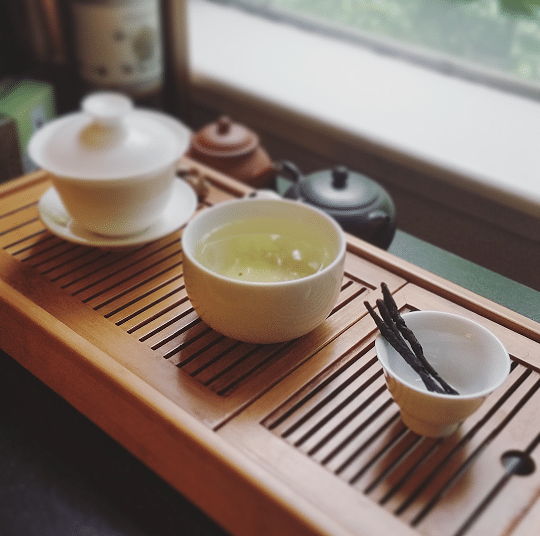
It was there I witnessed where the “bitter nail” in the name came from. There really is no way to describe it. It’s definitely bitter, but not offensively so. It’s reminiscent of nettle leaf, but not off-puttingly so. The sensation is just straight-up . . . “essence of bitterness”. Any more than the one spear or a longer brew time would’ve made it unbearably pungent. As it stands, it was pleasant in the way a cuppa puerh was relaxing.
Sichuan Kuding Cha (Wild Appearance)
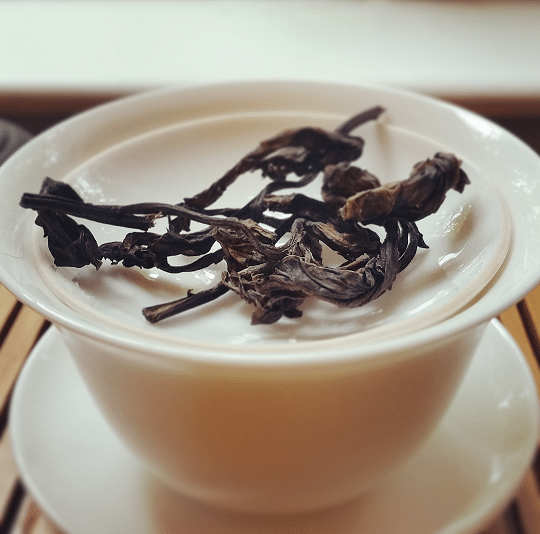
The wilder-spun leaves—while similar in color—couldn’t have been more different from the Yunnan ones. First off there was more color to them, ranging from obsidian black to dark purple, and further on to beige-tipped. Secondly, the dry scent was different. The cinnamon bark comparison was still apt, but gone was the puerh likeness. Rather, this smelled like a ten-year-aged Dong Ding oolong, medium-roast. The aroma was toasty and plum-like, which complimented the wilder leaf-rolling technique.
The Sichuan stuff didn’t fare as prettily in the brew color as the Yunnan did. The liquor brewed to the same type of pale green, but the color was nowhere near as vibrant. It was a tad muddier, pond-like. More like a rough-hewn, low-altitude oolong than a dazzling springtime green tea. It, too, didn’t give much in the way of a cup aroma—a smidgen of spearmint, that was it. The taste, though, definitely had character. Perhaps too much, for some taste buds.
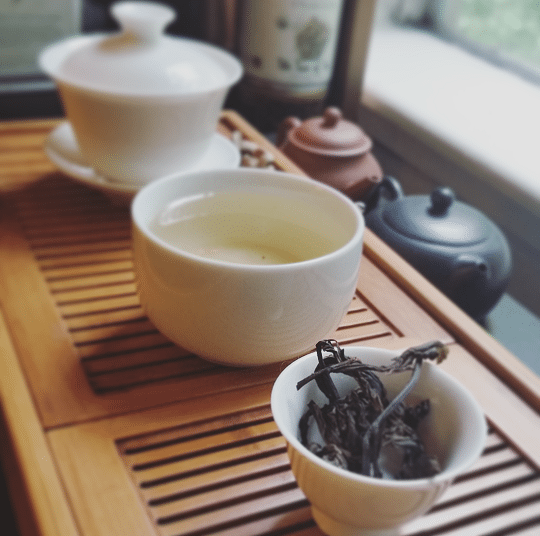
Basically, read my taster notes for Yunnan stuff, and substitute the word “puerh” with “oolong”. This had similar notes to a Tie Guan Yin up until (literally!) the bitter end. It also had that weird, lingering bitterness that just hung around on the tongue for minutes on end after sipping. Again, not terribly unpleasant . . . just different. But if I were to choose, I would prefer the aftertaste with the Yunnan over the Sichuan—if only for its gentler bite on the tongue.
A few days after this pairing, I somehow stumbled upon a Wikipedia article devoted to Kuding Cha. It mentioned both the Yunnan and Sichuan variants. But there was a snag . . . the Sichuan stuff? . . . wasn’t the same species!

Apparently, most of the Sichuan Kuding Cha offerings were from a wax tree species—Ligustrum robustum.
Dammit, that’s cheating, China!
Oh well, I guess it was serendipitous, then, that I enjoyed the real-deal Yunnan stuff more.
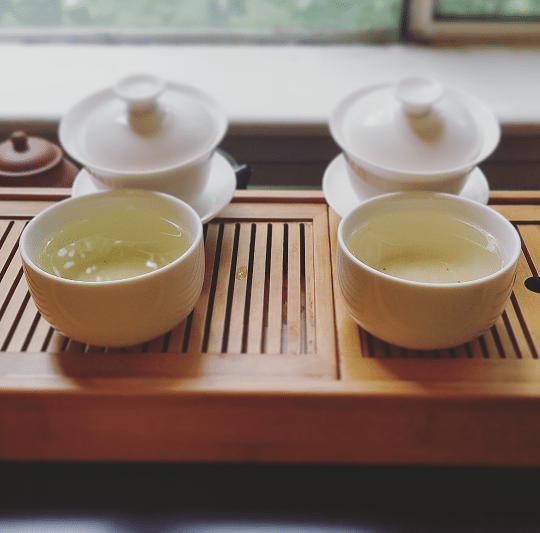
To buy the Yunnan Kuding Cha, go HERE.


Margo Hutchinson
tea is getting so complicated! but it is very interesting. Guess this is what keeps you up at night, since it has caffeine (sp)..ha ha Carry on.
Xavier
You really go where I would never go. 😛
Jason Ellis
I’m going to have to try this one as well, though I’m confident it doesn’t contain caffeine.
lazyliteratus
The sleepless night I had after begs to differ.